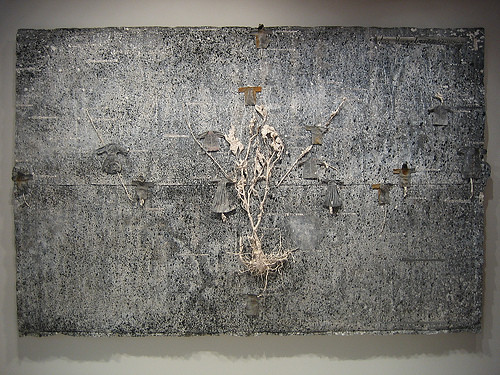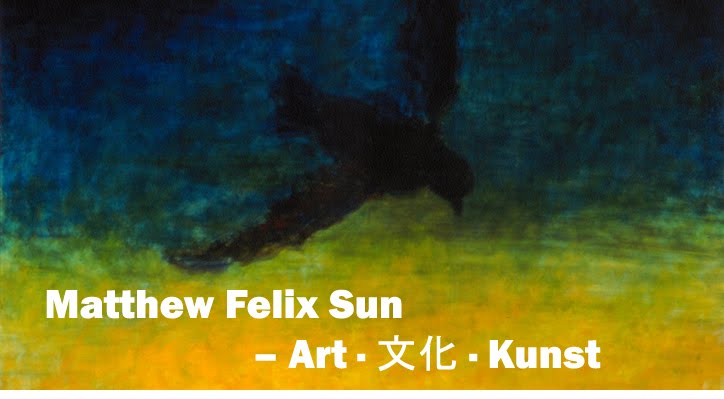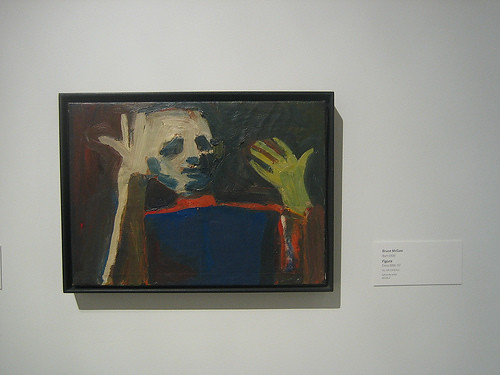My favorite was an Edward Hopper, Rooms by the Sea (1951), which, in contrast to his usual gloomy and enclosed settings, was surprisingly sunny and airy, though not without some uncertainty and vulnerability. The beautiful shaded green and yellow floor contrasted wonderfully with brilliant blue sky and lapping waves see through huge openings of the house, which cast bright geometrical shapes on the walls and floor, and those window sand sunshine created many focal points and they echoed one another through the canvas. A dash of red sofa and brown dresser, seen at the edge of the painting, anchored the sharp angled composition, and balanced the large sun spot and the open sea at the right edge of the canvas.

Rooms by the Sea, 1951, Edward Hopper
My second favorite was Die Ungeborenen (The Unborn) (2001) by Anselm Kiefer, in his usual monochromatic fashion, and the media were again, consisted of paint, plants, and perhaps metal cutout dresses, all his usual media and motifs. Over the dark, though not overwhelmingly gloomy background, a delicate, broken plant floated in the center, with several very small dresses hung on its extended branches at varying heights. The message was not very clear, even aided with the title; perhaps, those dresses symbolized some tragically unborn children, and that made this dark, yet very delicate painting very touching and poignant.

Die Ungeborenen (The Unborn), 2001, Anselm Kiefer
My Favorite Museum Collection Series
>> My Favorite Museum Collection Series 152: My Favorite Paintings at J. Paul Getty Museum - Getty Center, Los Angeles
<< My Favorite Museum Collection Series 150: My Favorite Paintings at Oakland Museum of California
List of My Favorite Artworks in the Museums I've Visited
Other Related posts on Art · 文化 · Kunst:
- Museum of Modern Art (MOMA), New York City
- "The Steins Collect" Exhibit in San Francisco Museum of Modern Art (SFMOMA)
- Art in Subway Station, New York City
- Neue Galerie New York - Austrian and German Art Gallery
- Barry McGee Mural, Soho, New York 2010
- Arslan: In the Midst of a Single Breath - Dillon Gallery, New York






















